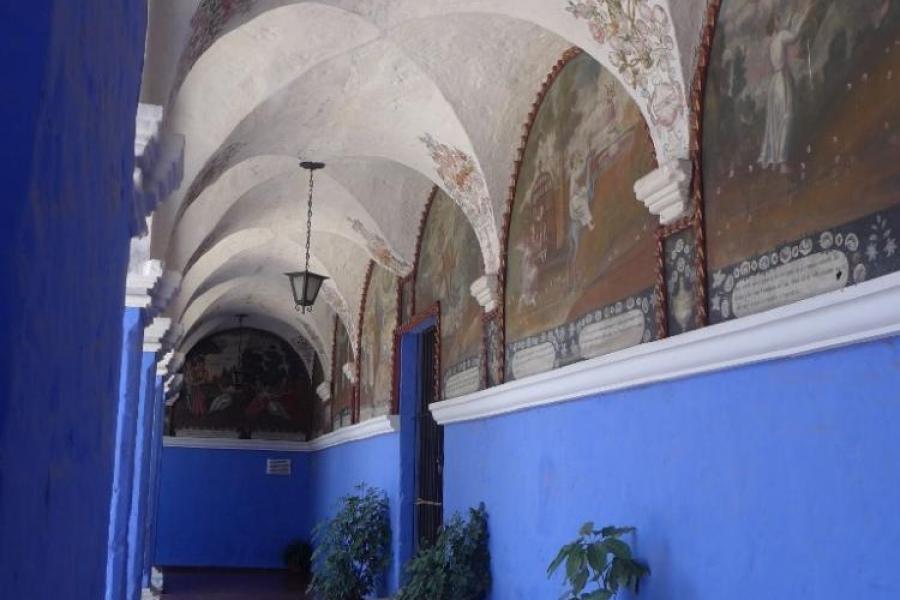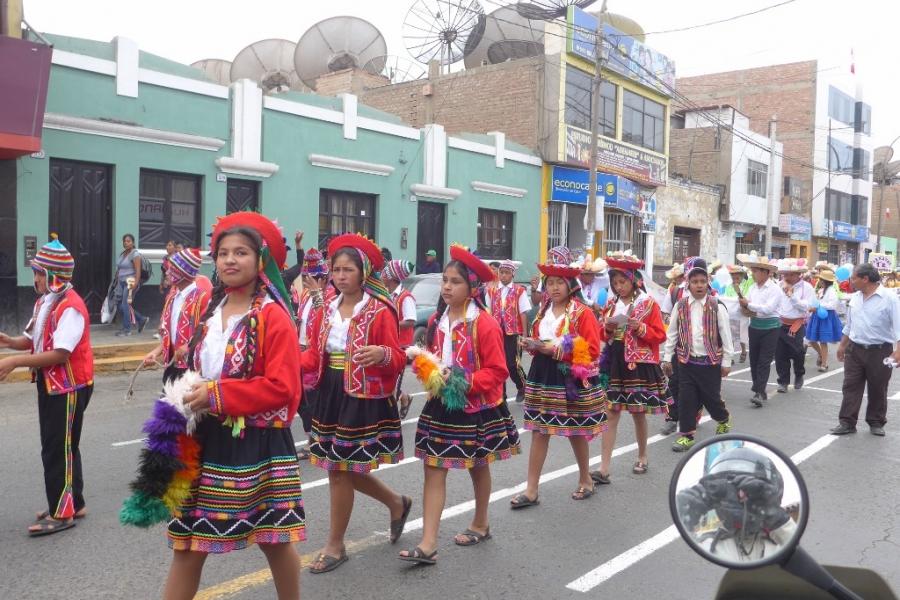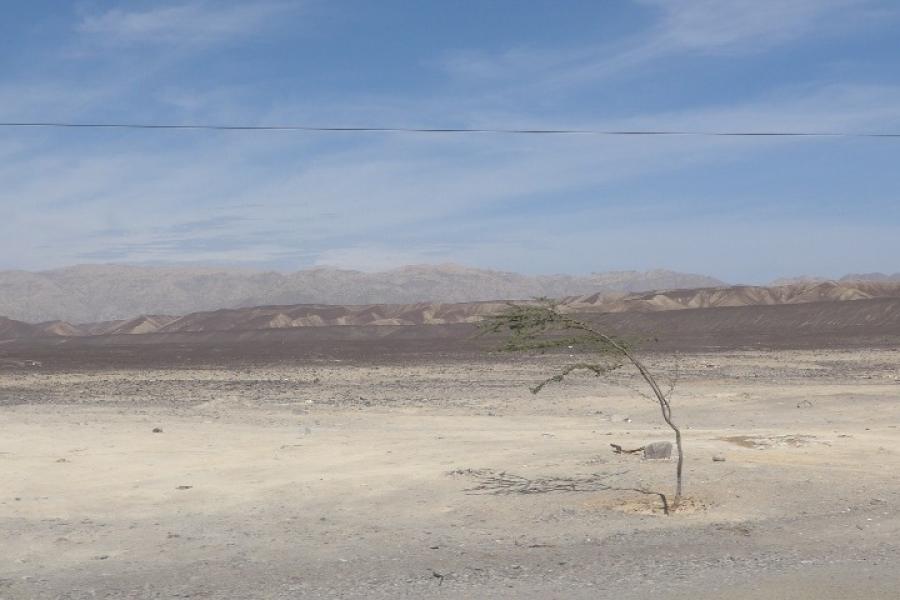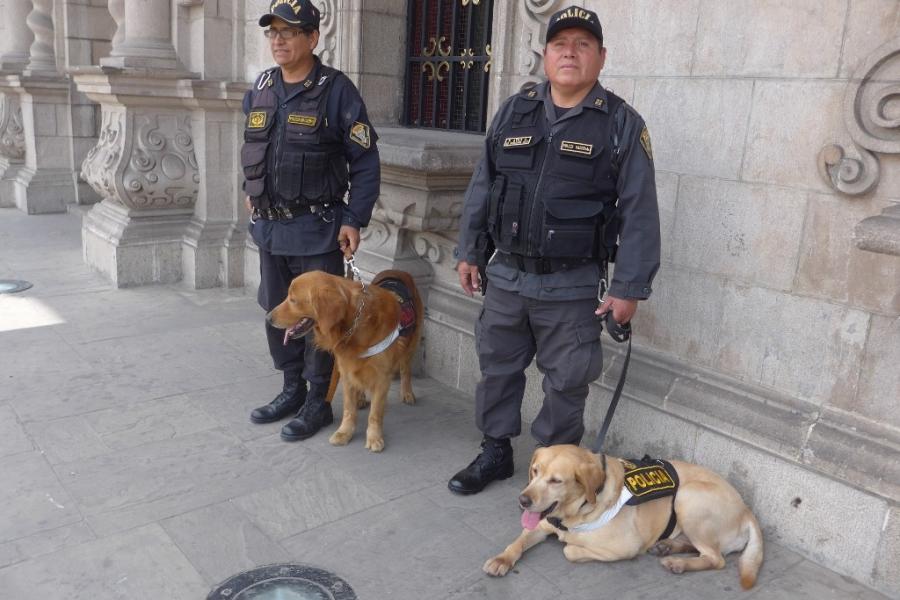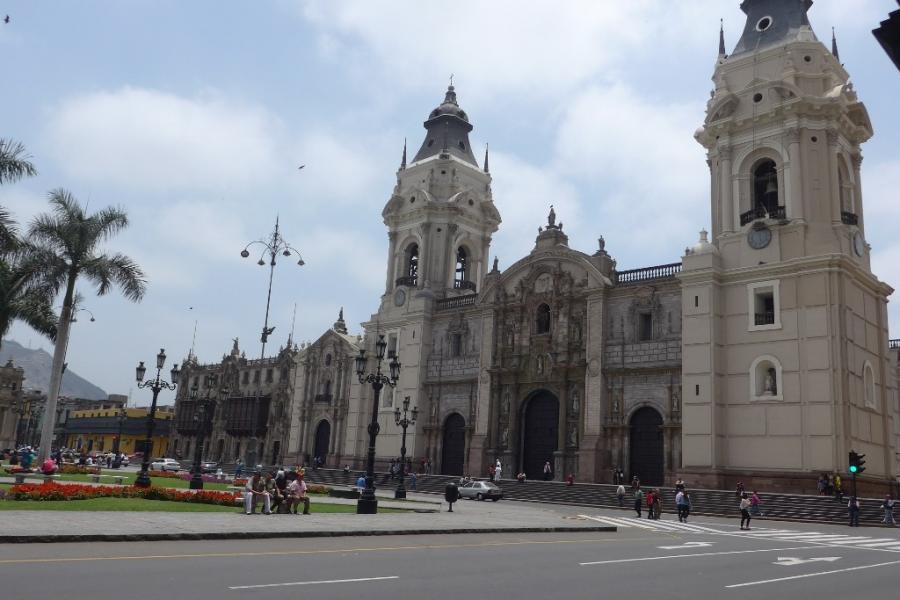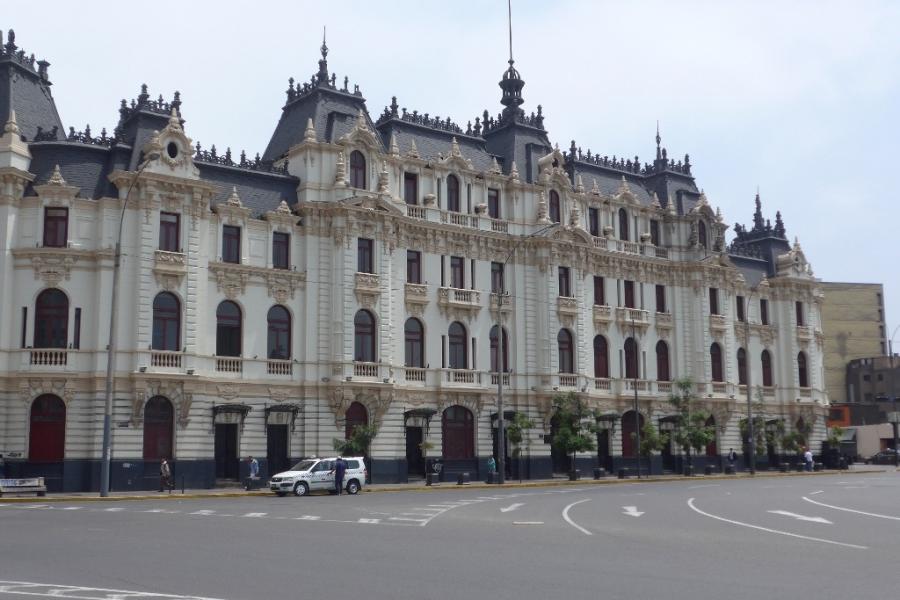Differences (Originally posted 7 Nov 2016)
Country
After the gritty working town of Chepén, and the long grind south through villages struggling to survive on the edge of a great desert, arriving in the swank southern suburbs of Peru's capital Lima was like dropping into some parallel universe. Coffee shops, US dollar prices, an army of street sweepers and cars that occasionally stopped to let a pedestrian cross, all marked this out as a place apart; a place protected by a hard shell of surrounding barrios that could be intended to keep the desert out, or the residents in.
We whiled some time sorting, or trying to sort, visas for Paraguay and Brazil and didn't mind the diversion of the administrative matters. We have always found that a few days trying to solve an administrative problem is a better way to get to know a place than a week of tourism. So, by the time we were ready to slip by the guards and escape to that other Peruvian universe, we had the public transport system sorted and knew where to find all manner of useful services and, of course, an espresso. We even managed haircuts which is always a good sign.
This bifurcation of society, with rich enclaves forming a protected core within the wider mass, is common in many places and is certainly not a unique characteristic of Peru. The Americas are, with the exception of Canada, a place of great income inequality and in this company, Peru is middle ranking; not quite as equal as the USA or Argentina but a lot better than Bolivia or Colombia. But Peru is different, and the differences are more than superficial.
This is not surprising. The countries of modern Spanish America do have many common features inherited from their prolonged period of shared enslavement, but are also fiercely individual to the extent that the hundred years after independence was marked out by a series of savage wars over territory, resources and leadership in the Latin world.
Some of the reasons for this internecine rivalry can be found in the nature of the Spanish domination. Throughout its 300 year rule, the Spanish kings were interested only in plunder. They had no curiosity beyond securing sufficient riches to ensure their own survival. This led to a particularly limiting form of governance where any interaction between the regional colonies was strictly controlled through Madrid. The colonies could not trade directly with one another, nor was direct communication promoted. No manufacturing was allowed. Each reported back to Madrid like the spokes on a wheel. The aim was to deny any political or social growth and thereby limit the ability to rebel.
The oppression went further. Printing presses were not allowed and the Jesuits were expelled when they started to educated the native people. More importantly, however, was the promotion of enmity between the colonies. In the Spanish New World, those living over the mountains were the “other”, to be feared. The king's army, of course, would do the protecting. Since the pre-Spanish civilizations were in a constant state of war, these were natural enmities easily reinforced.
The Caribbean states of Colombia and Venezuela were better off. It was impossible for the remote crown to stop trading and communications with nearby countries and Britain and the United States both had a strong influence in the region. Peru was more remote from outside influence and was also the seat of the Viceroy of Spain. It was strongly controlled by an élite of Peruvian born Spanish who protected their Spanish heritage as a passport to power and wealth.
It is no wonder then, that the revolution was not enthusiastically endorsed everywhere. The Peruvian élite were always going to be on the side of the winners, whoever that might be. It was the Argentinian army of San Martin that started the liberation of Peru but by 1822 San Martin was ailing and exhausted after a decade of war. He retired to Argentina and wished Simón Bolívar and his army from the north good luck. His summary of Peru is illuminating:
“All the power of the supreme being is not enough to liberate Peru, that accursed country; only Bolívar, backed by true might, can hope to accomplish it.”
Bolívar's army, led by his brilliant young general Sucré, eventually brought the main force of the Spanish army to battle near the city of Ayacucho. With a smaller and less well equipped force, Sucré outmanoeuvred and outfought the Spanish under the experienced Generals Valdés and Canterac.
But, the liberating armies of San Martin and Bolívar included few Peruvians. San Martin fought his way up from Argentina while Bolívar's force was Venezuelan and Colombian with a small contingent of Peruvians recruited from the country on the march south. The majority of the Spanish army was, by comparison, Peruvian and the majority of the 1,800 Spanish dead at the end of the battle were Peruvians.
The question at the time was why San Martin and Bolívar would expend the blood and gold of their own countries to liberate a land which would not be thankful for the service. Bolívar was, however, absolutely clear about his reason: unless the Spanish were removed entirely from the continent, they would have a foothold from which to reassert Spanish rule once they had rebuilt the military resources and political will to do so. It has an inescapable logic.
By the last days of 1824 the job was done and Spanish America was no more. What remained, however, were new countries distrustful and suspicious of each other, ruled by élites who saw themselves in the mould of their past Spanish overlords. The grand vision of Bolívar was quickly abandoned along with his egalitarian constitutions. It was business as usual only now no taxes need go to the king and there were a slew of new sibling countries with which to argue without constraint. The result was more than a century of bloody war and struggle.
Peru was also the end of Bolívar's grand dream, for what was strategically essential in Lima was a bloody waste back in Bogotá. His own assessment was as caustic as San Martin's:
“Peru contains two elements that are the bane of every just and free society: gold and slaves. The first corrupts everything it touches, the second is corrupt in and of itself.”
With these grizzly thoughts on a troubled past we finished our week 1000km south of Lima in the beautiful city of Arequipa spending a quiet Sunday seeing the sights. We are finally, and thankfully, away from the desert plain at 2 500m and pleased with the change. Tomorrow we go north, onto the high plains, to Lake Titicaca, a reunion with some dear friends, and then the Bolivian border.









